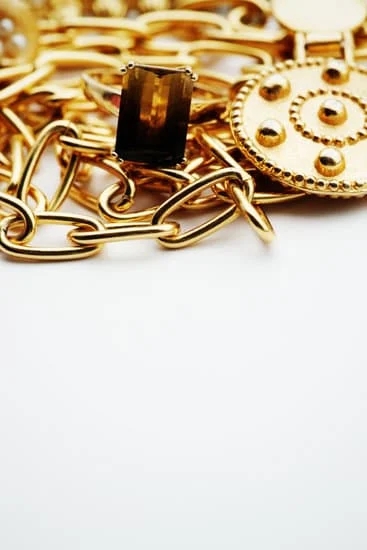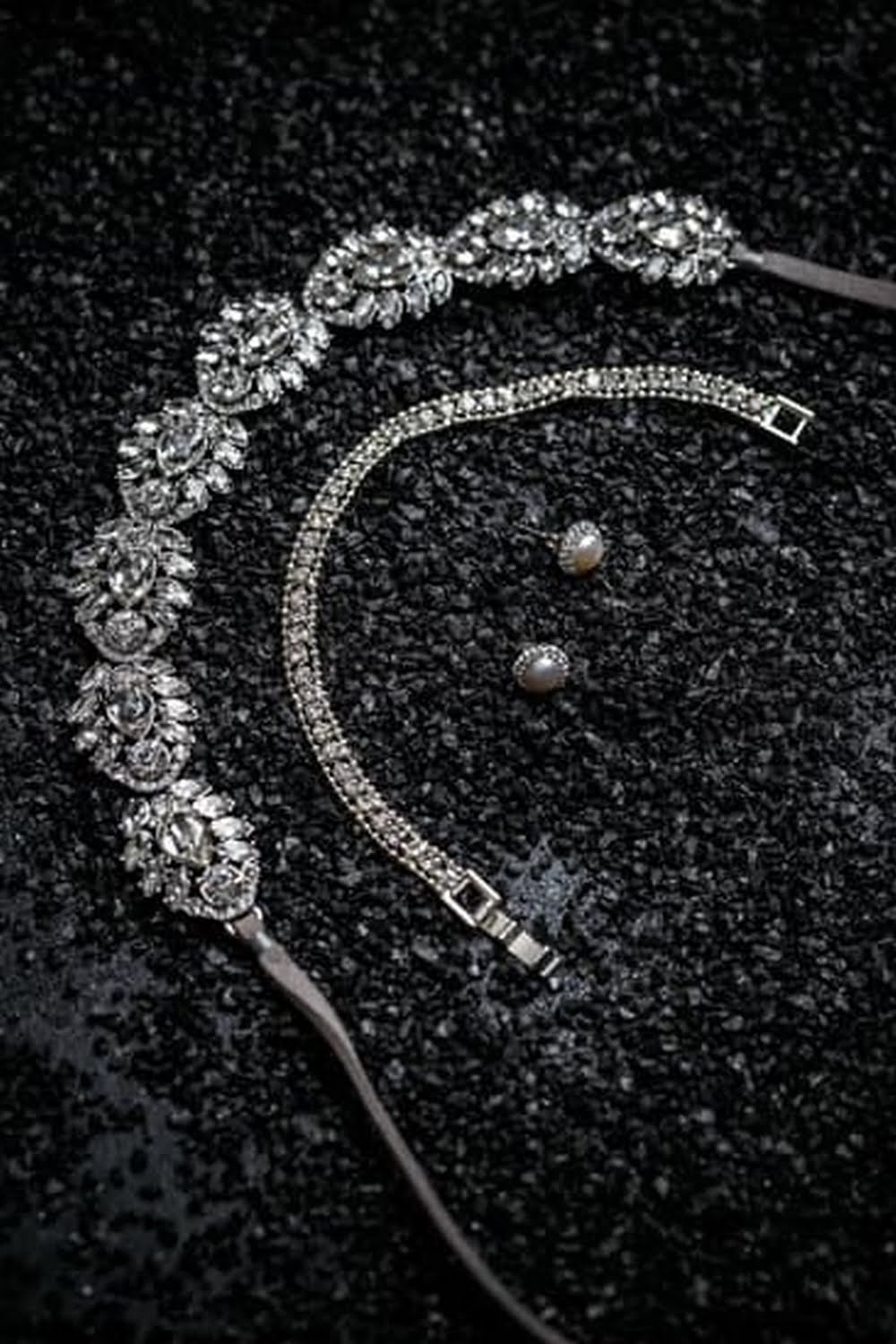A fine jewelry brand business plan serves as a roadmap for success in the highly competitive world of luxury accessories. This article will provide insights on how to develop a comprehensive business plan that encompasses every aspect of launching and growing a jewelry brand. From market analysis and product development to marketing strategies and financial projections, this guide will equip aspiring fine jewelry entrepreneurs with the necessary tools to thrive in the industry.
A well-developed business plan is crucial for a jewelry brand as it outlines the company’s goals, strategies, and action plans. It serves as a blueprint that guides decision-making processes and helps navigate challenges along the way. By clearly defining the brand’s mission, vision, and objectives, a fine jewelry business plan ensures that every action taken aligns with the overarching strategy.
In this blog post, we will delve into what exactly constitutes a fine jewelry brand business plan, highlighting its importance in establishing a strong foundation for success within the industry. We will explore key components of a comprehensive business plan while providing practical tips and strategies to create an effective roadmap for your luxury accessories venture.
Whether you are starting from scratch or looking to refine your existing plan, this guide will assist you in crafting a business plan that sets your fine jewelry brand on the path to profitability.
Executive Summary
The executive summary is a crucial component of your fine jewelry brand business plan. It serves as the essence of your entire plan, capturing the attention of readers and providing them with an overview of your brand’s vision, mission, and objectives. In this section, we will delve into the key aspects that should be included in your executive summary to effectively communicate your brand’s essence.
Defining the Purpose and Audience
Before diving into the details of your business plan, it is important to define the purpose and audience of your plan. Are you creating the plan for yourself as a guiding document, or are you seeking investors or partners? Understanding this will help tailor your executive summary accordingly. For example, if you are presenting to potential investors, you may want to emphasize the financial aspect and highlight profitability potential.
Essential Components
The executive summary should provide a concise but comprehensive overview of your fine jewelry brand. It should include key components such as:
- Brand Vision: Clearly articulate what your brand represents and how it aims to make a mark in the fine jewelry industry.
- Mission Statement: Describe the purpose of your brand’s existence and what sets it apart from competitors.
- Objectives: State measurable goals that you aim to achieve over a specific period, such as increasing market share or expanding internationally.
- Unique Selling Proposition (USP): Highlight what makes your brand unique and why customers should choose your jewelry over others in the market.
Effectively Communicating Your Essence
To effectively communicate your brand’s essence through your executive summary, craft compelling language that captures attention and inspires interest in readers. Use persuasive storytelling techniques to convey passion, innovation, quality craftsmanship, and exceptional design that characterizes your jewelry pieces.
Remember to keep the executive summary concise yet impactful. Use bullet points or short paragraphs to convey information effectively without overwhelming readers with unnecessary details. The goal is to leave readers intrigued and wanting to learn more about your fine jewelry brand.
In the next section, we will explore market analysis and how it can help you uncover opportunities for your fine jewelry brand.
Market Analysis
When starting a fine jewelry brand, conducting a thorough market analysis is essential to uncovering opportunities and gaining a competitive edge. This section of the business plan focuses on the steps and strategies involved in analyzing the market for your jewelry brand.
To begin, start by conducting extensive market research for the jewelry industry. This research should encompass factors such as current trends, customer preferences, pricing strategies, and potential growth areas within the industry. By understanding the market landscape, you can identify gaps and opportunities that will inform your brand’s positioning and marketing efforts.
Identifying target customers is another crucial aspect of market analysis for a fine jewelry brand. Consider demographics such as age, gender, location, and income level to define your target audience accurately. Additionally, delve deeper into their preferences and purchasing behavior in relation to fine jewelry. This information will help you tailor your product offerings and marketing messages specifically to your ideal customers.
Analyzing competitors is also vital in developing a successful fine jewelry brand. Identify key competitors within your target niche and analyze their strengths and weaknesses. Evaluate their product offerings, pricing strategies, marketing initiatives, and customer feedback to gain insights into what sets them apart from others in the market. This analysis will allow you to differentiate your brand by offering unique value propositions that resonate with your target customers.
| Market Analysis Factors | Key Considerations |
|---|---|
| Current Trends | Analyze the latest fashion trends influencing the fine jewelry industry. |
| Customer Preferences | Understand customer preferences regarding materials used (e.g., gold, silver, gemstones) and design styles. |
| Pricing Strategies | Research pricing strategies applied by competitors and determine an optimal pricing model for your brand. |
| Potential Growth Areas | Identify emerging markets or untapped customer segments that present growth opportunities for your brand. |
| Target Customers | Determine the demographics, preferences, and purchasing behavior of your ideal customers. |
| Competitor Analysis | Analyze key competitors to understand their product offerings, pricing strategies, marketing initiatives, and customer feedback. |
Product Development
Designing a standout jewelry collection
One of the most crucial aspects of product development for a fine jewelry brand is designing a standout jewelry collection that aligns with your brand’s identity. This involves identifying the unique selling points of your brand and translating them into exquisite pieces that capture the attention and interest of your target customers.
When designing your jewelry collection, it’s important to consider not only the latest trends but also your brand’s aesthetic and values. This will help you create designs that are distinctive and set your brand apart from competitors. Whether you choose to create modern, minimalist pieces or luxurious, opulent designs, ensure that every piece reflects the essence of your brand.
Additionally, you may consider offering customization options to cater to individual customer preferences. This can be achieved through personalized engravings or by allowing each customer to select their preferred gemstones or metals for their jewelry. By providing personalized options, you can provide a unique and tailored experience for your customers.
Sourcing high-quality materials and gemstones
To craft fine jewelry pieces that exude quality and luxury, it’s crucial to source high-quality materials and gemstones. Research reputable suppliers who adhere to ethical practices and consistently deliver exceptional materials. This ensures that each piece you create is made with the utmost attention to detail and craftsmanship.
Consider collaborating with expert gemologists who can advise you on selecting gemstones that meet both aesthetic standards and ethical considerations. Gemstone sourcing should take into account factors such as origin, sustainability, and compliance with fair trade practices.
In addition to gemstones, carefully select high-grade metals such as gold or platinum that will serve as the foundation for your jewelry pieces. Investing in top-notch materials will not only enhance the value of your jewelry but also contribute to building a reputation for excellence within the industry.
Establishing collaborations with skilled artisans and jewelers
Collaborating with skilled artisans and jewelers can be instrumental in bringing your jewelry designs to life. Seek out partnerships with experienced craftsmen who share your passion for creating exceptional pieces. These artisans can bring their expertise and attention to detail to transform your designs into tangible works of art.
Look for jewelers who have a strong track record in handling precious materials and possess the necessary technical skills to realize your vision. Establish open lines of communication and foster a collaborative working relationship, as this will help ensure that the final product aligns with your expectations.
Having skilled artisans as part of your production process also allows you to cater to customization requests, as they have the expertise needed to bring unique design elements to fruition. Their craftsmanship and attention to detail contribute immensely to the overall quality of your fine jewelry pieces, making them even more appealing to discerning customers.
By focusing on designing a standout jewelry collection, sourcing high-quality materials and gemstones, and establishing collaborations with skilled artisans and jewelers, you can create unique and irresistible fine jewelry pieces that set your brand apart in the market. These elements play a significant role in building brand recognition, attracting customers, and ultimately achieving success in the fine jewelry industry.
Marketing and Sales Strategies
One of the most crucial aspects of running a fine jewelry brand is developing effective marketing and sales strategies to promote your brand and achieve success. In this section, we will explore the key steps to take in order to effectively market your fine jewelry brand and reach your target audience.
Firstly, it is essential to develop a comprehensive marketing strategy for your jewelry brand. This involves identifying your target audience and understanding their preferences, needs, and desires. Conduct thorough market research to gain insights into the current jewelry trends and consumer behavior. By understanding your target customers, you can tailor your marketing efforts to resonate with them and create a strong connection with your brand.
In today’s digital age, utilizing various marketing channels is imperative for the success of a fine jewelry brand. Social media platforms such as Instagram, Facebook, and Pinterest are powerful tools for showcasing your jewelry pieces and engaging with potential customers. Create compelling content that highlights the unique features of your products and tells the story behind each piece. Consider collaborating with influencers or partnering with fashion bloggers who align with your brand’s aesthetic to expand your reach.
Moreover, implementing effective sales tactics is essential for driving revenue for your fine jewelry brand. Set realistic sales goals based on market research and determine the pricing strategy that best suits your target audience. Consider offering special promotions or discounts during holiday seasons or special occasions to attract new customers and retain existing ones. Additionally, providing exceptional customer service and ensuring customer satisfaction will help build a positive reputation for your brand and encourage repeat purchases.
To summarize, developing effective marketing and sales strategies is vital for promoting a fine jewelry brand successfully. By understanding your target audience, utilizing various marketing channels, implementing sales tactics wisely, you can effectively reach out to potential customers and build a strong customer base for long-term success.
| Marketing Strategies | Sales Strategies |
|---|---|
| – Identify target audience and preferences | – Set realistic sales goals |
| – Conduct thorough market research | – Determine pricing strategy |
| – Utilize social media platforms | – Offer special promotions or discounts |
| – Collaborate with influencers or fashion bloggers | – Provide exceptional customer service |
Operations and Management
Running a smooth fine jewelry business requires careful attention to operations and management. This section of the business plan focuses on the necessary resources, equipment, and tools for your business, as well as the supply chain management and production process.
One important aspect of running a fine jewelry business is determining the necessary resources and equipment. This includes everything from materials and gemstones to machinery and tools. It is crucial to source high-quality materials that align with your brand’s vision and values.
Additionally, investing in top-notch machinery and tools will ensure that your production process runs smoothly and efficiently. By carefully selecting your resources and equipment, you can maintain the quality and craftsmanship that is essential for a fine jewelry brand.
Another key consideration in operations and management is the supply chain management process. This involves managing the flow of materials from suppliers to manufacturers to retailers or directly to customers. It is crucial to create a detailed plan for each step of this process, including sourcing raw materials, manufacturing jewelry pieces, quality control checks, packaging, and delivery logistics. A well-structured supply chain helps ensure timely delivery of products while maintaining consistent quality standards.
Establishing an organizational structure with clearly defined roles is also important for smooth operations. Identify key positions within your jewelry brand such as designers, artisans or jewelers, marketing professionals, sales representatives, and administrative staff. Clearly outlining responsibilities will help each team member understand their role in contributing to the overall success of the business.
Financial Projections
In the competitive world of fine jewelry brands, it is essential to have a clear understanding of your financial projections in order to determine the profitability and growth potential of your business. The financial projections section of your business plan provides insights into the monetary aspects of your enterprise, helping you make informed decisions and secure funding if needed. Here are some key steps to consider when calculating these projections:
- Estimating Costs: Before diving into financial projections, it is crucial to estimate the costs involved in starting and maintaining a fine jewelry brand. This includes expenses such as production materials, equipment, marketing and advertising, employee salaries, rent or lease costs, and any other overhead expenses. By accurately estimating these costs, you can establish a realistic foundation for your financial projections.
- Creating a Sales Forecast: A sales forecast is a prediction of your future revenue based on market research, customer demand trends, and industry analysis. It is important to develop a comprehensive understanding of your target market and competitive landscape in order to project sales accurately. By setting realistic goals for your sales growth over time, you can gauge the potential profitability of your fine jewelry brand.
- Projected Financial Statements: Developing projected financial statements allows you to see how your business is likely to perform financially over a specific period of time. This includes creating an income statement (also known as profit/loss statement), balance sheet, and cash flow statement based on your sales forecast and estimated costs. These statements provide a snapshot of where your business stands financially and help identify areas where adjustments may need to be made.
- Analyzing Risks: Every business venture carries inherent risks that may impact its profitability and growth potential. It is important to analyze potential risks specific to the fine jewelry industry, such as changes in consumer preferences, fluctuations in material prices, or increased competition from other brands. By identifying these risks upfront and developing contingency plans, you can mitigate potential financial setbacks and navigate challenges more effectively.
By carefully calculating your financial projections, you can gain valuable insights into the long-term profitability and growth potential of your fine jewelry brand. These projections will not only guide your decision-making process but also help attract potential investors or secure funding for your business. Remember to regularly review and update your financial projections as your business evolves, ensuring that you are always well-informed about the financial health of your fine jewelry brand.
Conclusion
In conclusion, developing a well-crafted fine jewelry brand business plan is essential for the success of your venture. Throughout this blog post, we have highlighted the importance of each section within the plan and provided guidance on how to effectively address them.
The executive summary serves as the heart of your business plan, conveying your brand’s vision, mission, and objectives in a concise and compelling manner. This section is crucial in capturing the attention of potential investors and stakeholders.
Market analysis allows you to uncover opportunities within the jewelry industry by conducting thorough research on target customers and competitors. By understanding the preferences and demographics of your target audience, you can tailor your products to meet their needs and gain a competitive edge.
Crafting unique and irresistible fine jewelry pieces is key to standing out from the crowd. Designing a standout collection that aligns with your brand’s identity, sourcing high-quality materials and gemstones, as well as establishing collaborations with skilled artisans will help you create an exceptional product offering.
Effective marketing strategies are vital for promoting your fine jewelry brand. Leveraging various channels such as social media and influencer collaborations will help you reach your target audience effectively and increase brand awareness.
Running a smooth fine jewelry business requires careful planning of operations and management. Determining necessary resources, establishing a detailed supply chain management process, and outlining key roles within your organization are all important aspects of efficient operation.
Financial projections play a critical role in calculating profitability and growth potential. Estimating costs involved in starting and maintaining a fine jewelry brand, creating realistic sales forecasts, and analyzing potential risks will enable you to make informed business decisions.
In closing, I encourage all aspiring fine jewelry entrepreneurs to take action now by starting work on their business plans. The journey may not always be easy, but with dedication, perseverance, and the right strategy in place as outlined throughout this blog post, you can bring your fine jewelry brand business plan to life successfully. Remember that every step forward brings you closer to achieving your dreams, and the world is eagerly waiting for your unique creations. Good luck.

Welcome to my jewelry blog! My name is Sarah and I am the owner of this blog.
I love making jewelry and sharing my creations with others.
So whether you’re someone who loves wearing jewelry yourself or simply enjoys learning about it, be sure to check out my blog for insightful posts on everything related to this exciting topic!





